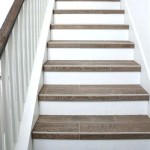Cost to Install Basement Ceiling Tiles: A Comprehensive Guide
Finishing a basement can significantly enhance a home's living space and property value. A crucial aspect of basement finishing is the ceiling, and one popular option is installing ceiling tiles. This article provides an in-depth look at the costs associated with installing basement ceiling tiles, covering various factors that influence pricing, different tile types, and potential labor expenses. Understanding these elements empowers homeowners to make informed decisions and budget effectively for their basement renovation project.
The overall cost to install basement ceiling tiles is influenced by a combination of material expenses and labor charges, as well as the project's scope and complexity. It's imperative to consider each component carefully to arrive at a realistic estimate.
Key Factors Affecting the Cost of Basement Ceiling Tile Installation
Several factors play a significant role in determining the final cost of installing basement ceiling tiles. These include the type of tiles selected, the size of the basement, the complexity of the installation process, and the geographic location, which influences labor rates and material costs.
1. Type of Ceiling Tile: The material composition, design, and features of ceiling tiles vary considerably, directly impacting their price. Common types include:
a. Mineral Fiber Tiles: These are among the most affordable options, often used in commercial settings due to their cost-effectiveness and sound-absorbing properties. Prices typically range from $1 to $3 per square foot.
b. Faux Tin Tiles: Made from PVC or other lightweight materials, faux tin tiles offer the aesthetic appeal of traditional tin ceilings without the high cost and weight. They generally cost between $3 and $7 per square foot.
c. Wood Look Tiles: These tiles provide the warmth and natural beauty of wood while being easier to install and maintain. Expect to pay between $4 and $10 per square foot.
d. Acoustic Tiles: Designed to improve sound absorption and reduce echo, acoustic tiles are often used in home theaters or music rooms. Prices typically range from $3 to $8 per square foot.
e. Specialty Tiles: This category includes tiles with unique designs, textures, or materials, such as metal or fabric-covered tiles. These can be the most expensive, ranging from $8 to $20 or more per square foot.
2. Basement Size and Layout: The square footage of the basement directly impacts the amount of material required, and consequently, the overall cost. A larger basement will naturally require more tiles and potentially more suspension grid components. Furthermore, the complexity of the basement layout, including corners, obstructions (pipes, ductwork), and irregularly shaped areas, can increase labor time and material waste, thereby affecting the final cost.
3. Installation Method: There are two primary methods for installing basement ceiling tiles: suspended ceiling (also known as a drop ceiling) and direct-mount ceiling. The choice of method influences both material and labor costs.
a. Suspended Ceiling: This method involves installing a grid of metal tracks suspended from the joists above, into which the ceiling tiles are then placed. Suspended ceilings offer easy access to wiring, plumbing, and ductwork, making them a popular choice for basements. However, they require more materials (grid, wires, fasteners) and may involve more complex installation, leading to higher labor costs.
b. Direct-Mount Ceiling: This method involves attaching the ceiling tiles directly to the joists or drywall above, using adhesive or fasteners. Direct-mount ceilings offer a cleaner, more finished look and can maximize headroom. However, they can be more difficult to install, especially if the joists are uneven or obstructions are present. Additionally, accessing utilities above the ceiling is more challenging with this method.
4. Labor Costs: Labor costs vary depending on the region, the contractor's experience, and the complexity of the project. Generally, expect to pay between $1 and $5 per square foot for professional installation. More complex installations, such as those involving intricate layouts or difficult-to-reach areas, may command higher labor rates.
5. Additional Costs: Beyond the cost of materials and labor, several other potential expenses should be factored into the budget:
a. Removal of Existing Ceiling: If there is an existing ceiling that needs to be removed, this will incur additional labor costs. The cost of removal can range from $0.50 to $2 per square foot, depending on the type of ceiling being removed and the ease of access.
b. Framing and Leveling: If the joists are uneven or require modification to accommodate the ceiling tiles, additional framing or leveling work may be necessary. This can add several hundred to several thousand dollars to the overall cost.
c. Electrical Work: Installing or relocating recessed lighting, wiring for speakers, or other electrical components will require the services of a qualified electrician. Electrical work can add significantly to the total cost, depending on the scope of the work.
d. Permits and Inspections: Depending on the local building codes, a permit may be required for basement ceiling installation. The cost of permits varies by municipality and usually ranges from $50 to $200. Inspections may also be required to ensure compliance with building codes.
e. Waste Disposal: Disposing of old ceiling tiles, packaging materials, and other construction debris will incur disposal fees. These fees vary depending on the local landfill rates and the volume of waste.
Estimating the Material Costs
To accurately estimate the material costs, it is essential to first determine the square footage of the basement ceiling. This is done by multiplying the length and width of the basement. Add an extra 10% to the total square footage to account for waste and cuts, especially if the basement has an irregular shape or numerous obstructions.
Once the square footage is determined, multiply it by the cost per square foot of the chosen ceiling tiles. For a suspended ceiling, factor in the cost of the suspension grid components, including the main runners, cross tees, wall angles, and suspension wires. These components typically cost between $0.50 and $1.50 per square foot.
For a direct-mount ceiling, factor in the cost of the adhesive or fasteners required to attach the tiles to the joists or drywall. The cost of adhesive or fasteners varies depending on the type of tile and the substrate to which it will be attached.
Consider the cost of any additional materials, such as trim, molding, and lighting fixtures. These items can add to the overall cost, but they can also enhance the aesthetic appeal of the finished ceiling.
Understanding Labor Costs and the Installation Process
Labor costs account for a significant portion of the total cost of basement ceiling tile installation. Obtaining multiple quotes from different contractors is advisable to ensure a competitive price. When comparing quotes, verify that they include all aspects of the project, such as removal of the old ceiling, installation of the new ceiling, and cleanup. Also, ask about the contractor's experience and qualifications and request references from past clients.
The installation process for basement ceiling tiles varies depending on the chosen method. For a suspended ceiling, the process typically involves the following steps:
1. Planning and Layout: The contractor will determine the optimal layout for the suspension grid based on the dimensions of the basement and the desired tile size. They will also account for any obstructions, such as pipes and ductwork.
2. Installation of Wall Angles: Wall angles are attached to the perimeter walls to provide support for the suspension grid.
3. Suspension of Main Runners: Main runners are suspended from the joists above using suspension wires. The main runners are typically spaced 4 feet apart.
4. Installation of Cross Tees: Cross tees are installed perpendicular to the main runners, creating the grid pattern. The spacing of the cross tees depends on the size of the ceiling tiles.
5. Installation of Ceiling Tiles: The ceiling tiles are placed into the grid openings, completing the suspended ceiling.
For a direct-mount ceiling, the process typically involves the following steps:
1. Preparation of the Surface: The joists or drywall above must be clean, dry, and level before installing the ceiling tiles.
2. Application of Adhesive: Adhesive is applied to the back of the ceiling tiles.
3. Attachment of Tiles: The tiles are pressed firmly against the joists or drywall, ensuring that they are properly aligned.
4. Fastening of Tiles: For added security, fasteners may be used to secure the tiles to the joists or drywall.
Regardless of the method chosen, it is important to ensure that the installation is performed correctly to prevent sagging, unevenness, and other problems. Hiring a qualified contractor can help to ensure a professional and long-lasting installation.
Planning and budgeting are essential for a successful basement ceiling tile installation. By understanding the various factors that influence the cost, homeowners can make informed decisions and ensure that their basement renovation project stays within budget.

Ceiling Tiles Reviews And Installation Cost

How Much Cash Will You Drop On A Ceiling Homeserve Usa

Drop Ceiling Vs Drywall In Basement Which Is Best Millennial Homeowner November 2024

Basement Drop Ceiling Tiles Total Finishing

How Much Does A Drop Ceiling Cost In 2024 Homeguide

Basement Ceiling Ideas Installation

Ceiling Tiles Reviews And Installation Cost

Basement Drop Ceiling Tiles In Milwaee Janesville Rockford Madison Finishing

Basement Drop Ceiling Tiles Finishing

Diy Basement Ceiling Ideas 6 Best Beautiful Budget Options This Life
Related Posts








